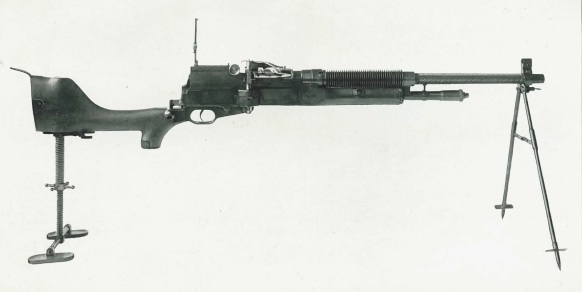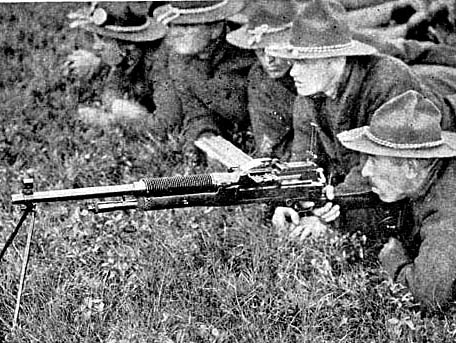The Benet-Mercie 1909 was the first light machine gun adopted by the American military. Although named for two designers, the Benet-Mercie was basically a Hotchkiss Portative machine gun chambered for the .30-06 cartridge. The guns were manufactured by Colt and Springfield Arsenal (a government-run entity at the time, not the business interest that exists today), and about 700 in total were made.

The gun was first used in the fighting against Pancho Villa, where it received a less-than-excellent reputation. Poorly trained gun crews had trouble properly loading the feed strips in the dark, preventing the guns from being effective in several actions. Later, the 1909s were used to train US soldiers heading to Europe in World War One, where they ended up using mostly French hardware (Chauchat LMGs). By the end of the war the Benet-Mercie was made obsolete in favor of the Lewis and Browning Automatic Rifle.
Considering its age, the Benet/Hotchkiss had a number of modern features – an adjustable gas regulator (it used a long-stroke gas action), quick-change barrel, and in the case of the US gun, it was issued with an optical sight standard.
However, the design also used 30-round feed strips that were responsible for many of the gun’s shortcomings. One of the interesting design features of the Benet/Hotchkiss is that the charging handle (which does not reciprocate) also acts as the fire selector. Rotating the handle moves the gun from safe to semiautomatic and fully automatic modes.

We have a 1916 edition of the US Army manual on the M1909 Benet-Mercie, which you can download from the Hotchkiss LMG page in the Vault.


Wow! that charging handle – selector must be very interesting ! I wonder how it actually works?
Cutaway in the manual is great !